

Church of San Miguel, Belmonte de Gracián
CURRENT PROTECTION STATUS: Asset of Cultural Interest (ACI)
TYPE OF ASSET: Property
CATEGORY: Religious
ARCHITECTURAL STYLE: Mudejar
CONSTRUCTION DATE:
Original construction, 16th century. Constructed mainly in the 16th century in the late Gothic style adjacent to a Mudejar tower. Only the apse remains from this period.
Expansion, 16th century. In the 16th century, the previous 14th-century church was expanded, of which only the apse remains. The new phase can be seen above all in the switch from the use of brick to stone.
The lower part of the church is considered a Mudejar construction whereas the upper part is late Gothic. The difference between the two architectural styles can be seen above all in the materials used, given that the entire temple is made of stone except for the apse and tower, erected in brick.
The construction materials are mainly brick and gypsum (or plaster). Its ornamentation is clearly Mudejar: panels of protruding brick detail work combined with diamond and crisscrossing shapes separated by angled brick friezes.
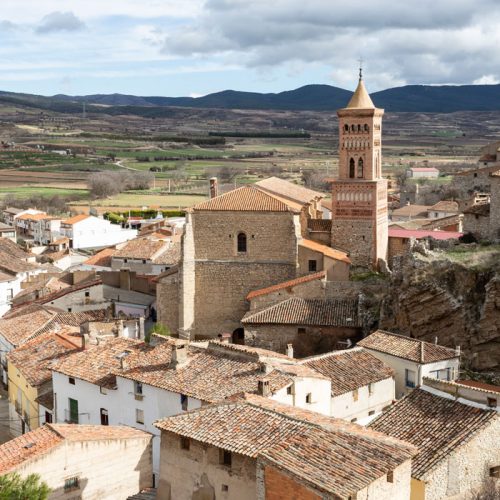
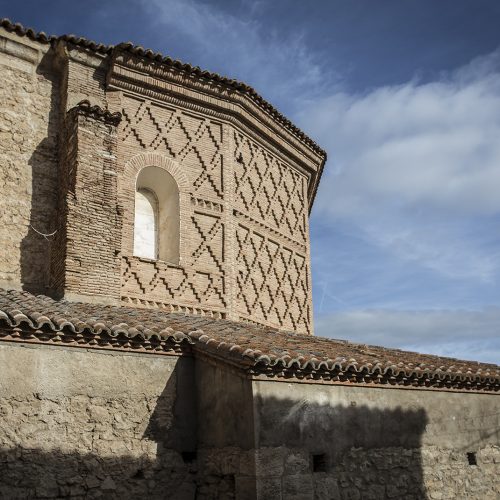
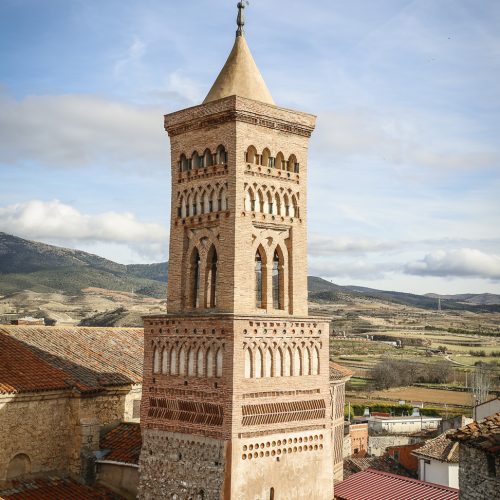
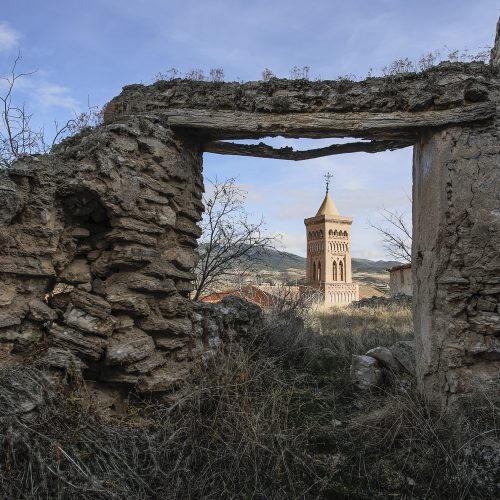
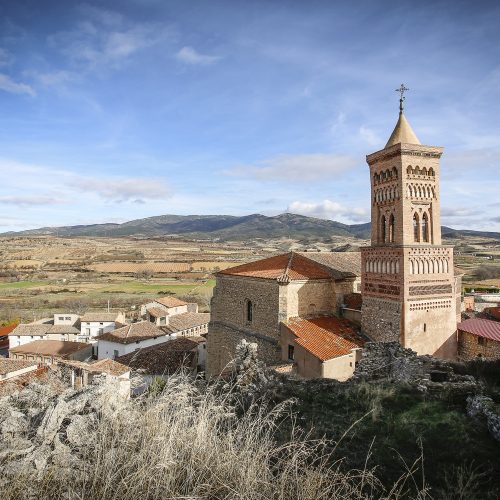
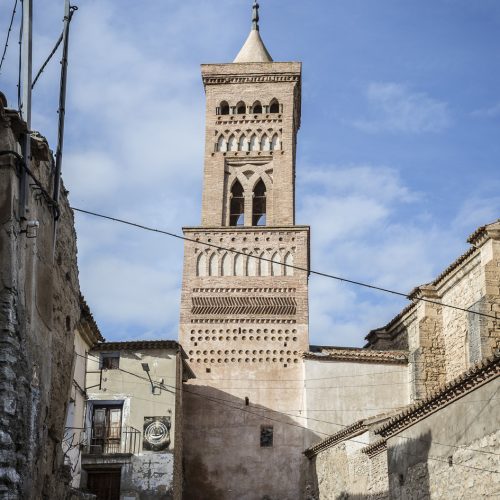
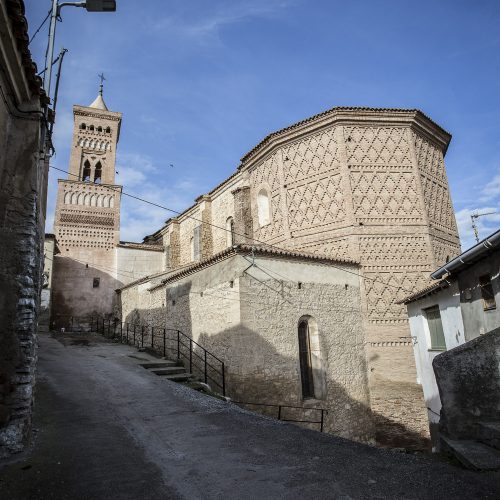
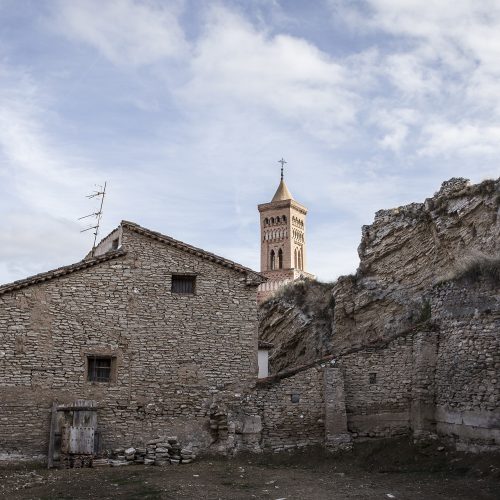
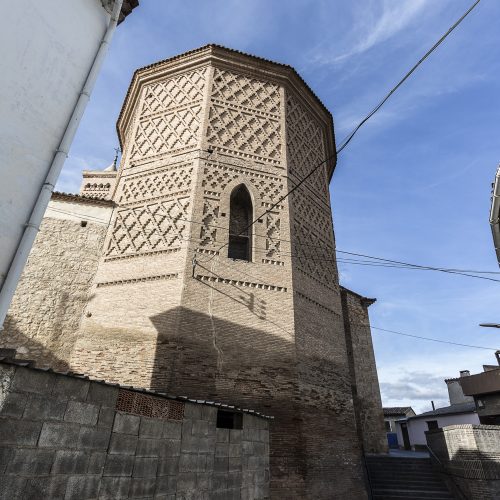
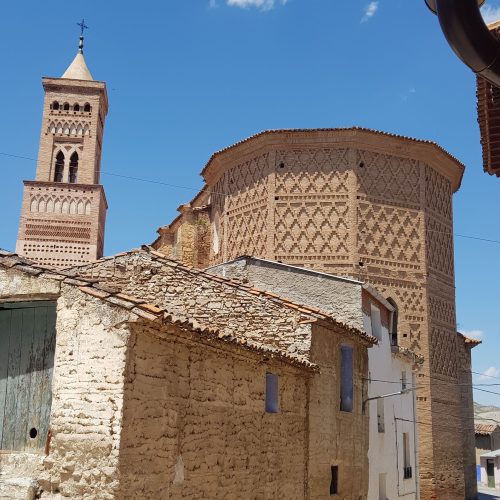
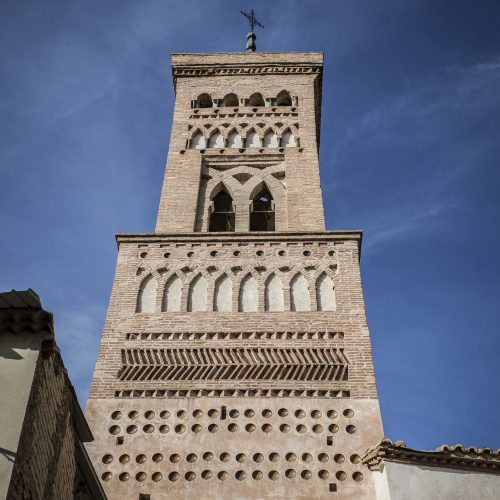

Projects and interventions
Declarations

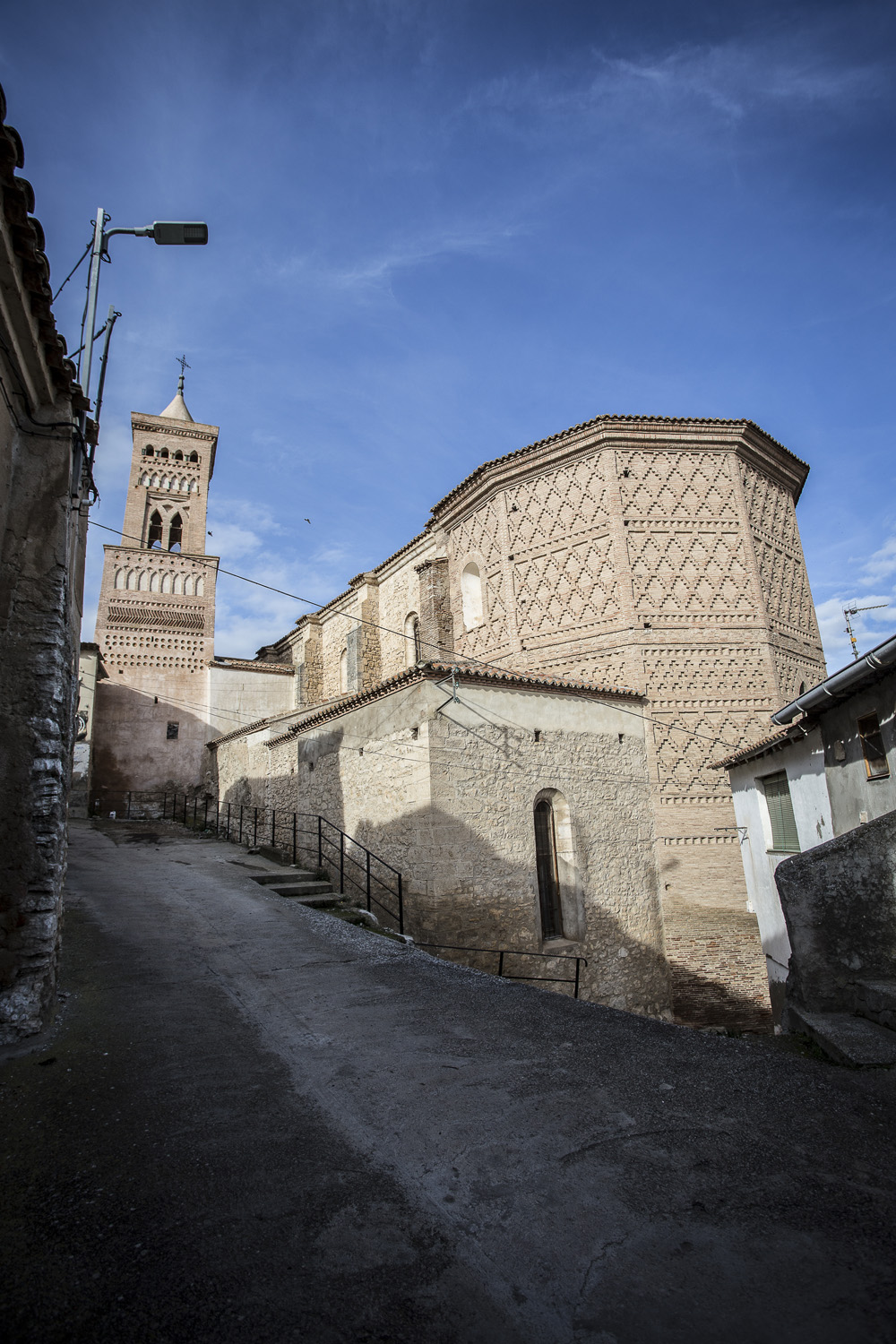
Current condition
Bibliography
CABAÑERO SUBIZA, BERNABÉ. Las torres mudéjares aragonesas y su relación con los alminares islámicos y los campanarios cristianos que les sirvieron de modelo, Turiaso. 1995 , nº XII, p. 11-51.
CRIADO MAINAR, JESÚS. La escultura romanista en la comarca de la Comunidad de Calatayud, Institución Fernando el Católico, Zaragoza, 2013.
GALIAY, JOSÉ. Arte mudéjar aragonés, Institución Fernándo el Católico, Zaragoza, 2002.
MILLÁN GIL, JULIÁN Y SANMIGUEL MATEO, AGUSTÍN (COORD.). Comarca de la Comunidad de Calatayud, Colección Territorio nº 20, Departamento de Presidencia y Relaciones Institucionales del Gobierno de Aragón, Zaragoza, 2005.
NAVAL MAS, ANTONIO. Arte de Aragón emigrado en coleccionismo USA, Huesca: [s.n.], 2015. SANMIGUEL MATEO, A. Torres de ascendencia islámica en las comarcas de Calatayud y Daroca, Centro de estudios bilbilitanos, Institución Fernando el Católico, Calatayud, 1998.
VV.AA. Comunidad de Calatayud y El Monasterio de Piedra, Colección RutasCai por Aragón nº 12, Zaragoza, 2004.
VV.AA. Tierra Mudéjar. El Mudéjar Aragonés, Patrimonio Mundial, Heraldo de Aragón, D.L. 2002.
Appendixes
Church of San Miguel
Plaza de Baltasar Gracián, s/n. 50332 Belmonte de Gracián (Zaragoza)
Visit Belmonte de Gracián
City Hall
www.belmontedegracian.es
WOULD YOU LIKE TO KNOW MORE?
www.turismodezaragoza.es





